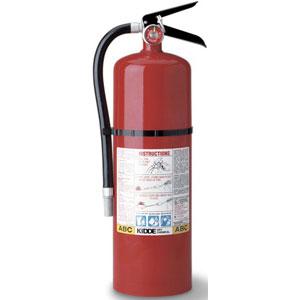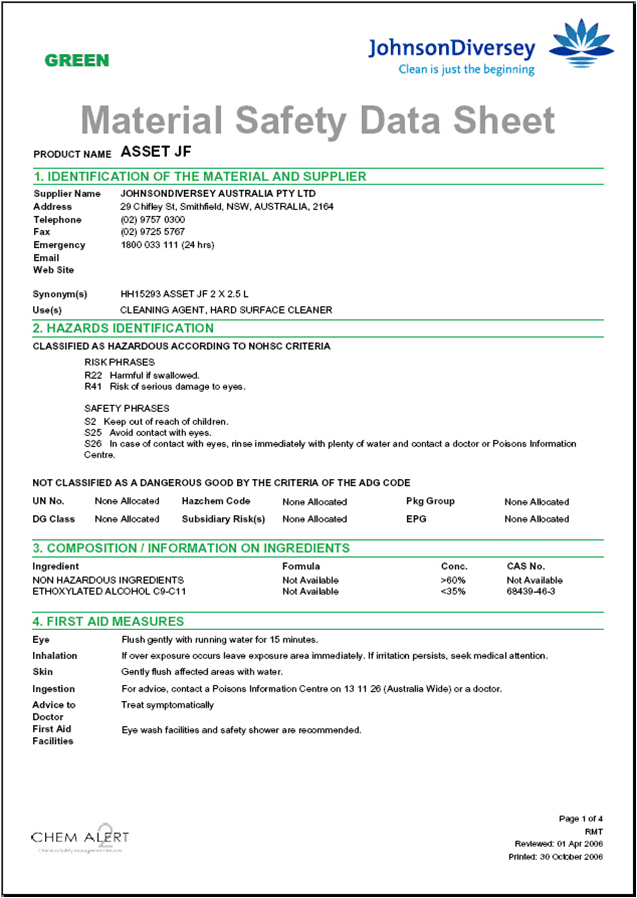3.4 Construction Safety Standards - Hygiene And Hazcom
(67).jpg)
.
- 1.
What industrial chemicals can harm your body?
- A.
Very few chemicals
- B.
Some chemicals
- C.
Most chemicals
- D.
All chemicals
Correct Answer
C. Most chemicalsExplanation
Most chemicals can harm your body because they may contain toxic substances or have adverse effects on your health. Exposure to these chemicals can lead to various health issues such as respiratory problems, skin irritation, organ damage, and even certain types of cancers. It is important to be aware of the potential risks associated with different industrial chemicals and take necessary precautions to minimize exposure and protect your health.Rate this question:
-
- 2.
Which are considered routes of exposure?
- A.
Inhalation
- B.
Absorption
- C.
Ingestion
- D.
Injection
Correct Answer(s)
A. Inhalation
B. Absorption
C. Ingestion
D. InjectionExplanation
The routes of exposure refer to the different ways in which a substance can enter the body. Inhalation occurs when a substance is breathed in through the respiratory system. Absorption happens when a substance is absorbed through the skin or mucous membranes. Ingestion occurs when a substance is swallowed and enters the digestive system. Injection refers to the direct introduction of a substance into the body through a needle or syringe. These four methods are considered routes of exposure because they all allow substances to enter the body and potentially cause harm or have an effect.Rate this question:
-
- 3.
Can the route of exposure affect the toxicity of the chemical?
- A.
Yes
- B.
No
Correct Answer
A. YesExplanation
The route of exposure can indeed affect the toxicity of a chemical. Different routes of exposure, such as inhalation, ingestion, or dermal contact, can result in varying levels of toxicity. For example, inhalation of a chemical may lead to more severe respiratory effects compared to ingestion. Similarly, dermal contact may cause localized skin irritation or absorption into the bloodstream. Therefore, the route of exposure plays a crucial role in determining the potential toxicity and health effects of a chemical.Rate this question:
-
- 4.
What does MSDS stand for?
- A.
Material Safety Data Systems
- B.
Material Safety Data Sheet
- C.
Manual of Safety Data Sheets
- D.
Material Safety Description Sheets
Correct Answer
B. Material Safety Data SheetExplanation
MSDS stands for Material Safety Data Sheet. This is a document that provides information about the potential hazards, handling, storage, and emergency procedures for a particular substance or product. It is used to ensure the safe use and handling of chemicals in various industries. The MSDS contains detailed information about the composition of the substance, physical and chemical properties, first aid measures, and precautions to be taken. It is an essential tool for workers, emergency responders, and anyone involved in the transportation, storage, or use of hazardous materials.Rate this question:
-
- 5.
Is it okay for an employee working in a lead abatement area to have food or tobacco in the potentially contaminated area?
- A.
Yes
- B.
No
Correct Answer
B. NoExplanation
It is not okay for an employee working in a lead abatement area to have food or tobacco in the potentially contaminated area because lead can easily contaminate food and tobacco products. Ingesting or inhaling lead can lead to serious health issues, such as lead poisoning. Therefore, it is important to maintain a clean and safe environment by not bringing any food or tobacco into the lead abatement area.Rate this question:
-
- 6.
Do liquid chemicals have to be consumed orally to present a danger to employees?
- A.
Yes
- B.
No
Correct Answer
B. NoExplanation
They can be absorbed through the skin.Rate this question:
-
- 7.
Gases are chemicals that are a gas at ___________.
- A.
32 degrees
- B.
Room Temperature
- C.
Hotter than room temperature
- D.
100 Degrees
Correct Answer
B. Room TemperatureExplanation
Gases are chemicals that are a gas at room temperature. This means that they exist in a gaseous state under normal conditions, without the need for extreme temperatures. Room temperature typically refers to temperatures around 20-25 degrees Celsius (68-77 degrees Fahrenheit), which is the range at which many gases are in their gaseous form.Rate this question:
-
- 8.
Most chemicals have limits on the amount of chemical you can be exposed to over a _____ hour period.
- A.
½
- B.
1 hour
- C.
8 hour
- D.
24 hour
Correct Answer
C. 8 hourExplanation
Most chemicals have limits on the amount of chemical you can be exposed to over an 8-hour period. This is because exposure to certain chemicals for prolonged periods can be harmful to human health. By setting limits on the amount of chemical exposure over an 8-hour period, it helps to ensure that individuals are not exposed to excessive levels of chemicals that could potentially cause adverse effects. This time frame is commonly used in occupational health and safety regulations to protect workers from hazardous substances in the workplace.Rate this question:
-
- 9.
____________ is the term used for long term exposure to a toxic substance.
- A.
Dose of Toxicity
- B.
Acute Toxicity
- C.
Chronic Toxicity
- D.
None of the above
Correct Answer
C. Chronic ToxicityExplanation
Chronic toxicity is the term used for long term exposure to a toxic substance. Unlike acute toxicity, which refers to the immediate harmful effects of a substance, chronic toxicity refers to the cumulative and long-lasting effects that occur after repeated or continuous exposure to a toxic substance over a prolonged period of time. This can include effects such as organ damage, cancer, and other chronic diseases.Rate this question:
-
- 10.
Carcinogens are chemicals that can…..
- A.
Cause birth defects.
- B.
Do no harm.
- C.
Cause cancer.
- D.
Cause damage to DNA.
Correct Answer
C. Cause cancer.Explanation
Carcinogens are chemicals that have the potential to cause cancer. They can initiate or promote the development of cancerous cells in the body. These chemicals can interact with DNA, causing mutations and damage to the genetic material, which can lead to the uncontrolled growth of cells and the formation of tumors. Therefore, the correct answer is that carcinogens cause cancer.Rate this question:
-
- 11.
What class of fire extinguisher is used for extinguishing electrical fires?
- A.
Class A
- B.
Class B
- C.
Class C
- D.
Class D
Correct Answer
C. Class CExplanation
Class C fire extinguishers are specifically designed to extinguish fires involving electrical equipment. These fires are caused by electrical short circuits or overloaded circuits, and using water or other conductive agents can further escalate the fire or pose a risk of electric shock. Class C fire extinguishers contain non-conductive agents like carbon dioxide or dry chemical powders that can safely smother the fire without conducting electricity. Therefore, Class C fire extinguishers are the appropriate choice for extinguishing electrical fires.Rate this question:
-
- 12.
Which of the following items are included on the MSDS?
- A.
Name of chemical
- B.
Chemical Properties
- C.
Physical Hazards
- D.
Health Hazards
- E.
All of the Above
Correct Answer
E. All of the AboveExplanation
The MSDS (Material Safety Data Sheet) is a document that provides information about the potential hazards of a chemical substance. It includes the name of the chemical, its chemical properties, physical hazards, and health hazards. Therefore, all of the given options are included on the MSDS.Rate this question:
-
- 13.
What are the health risks of this chemical?
- A.
Harmful if swallowed
- B.
Eye damage
- C.
Skin absorption
- D.
Harmful if inhaled
Correct Answer(s)
A. Harmful if swallowed
B. Eye damageExplanation
This chemical poses health risks if it is swallowed, causing harm to the body. Additionally, it can cause damage to the eyes upon contact, leading to potential eye-related issues.Rate this question:
-
Quiz Review Timeline +
Our quizzes are rigorously reviewed, monitored and continuously updated by our expert board to maintain accuracy, relevance, and timeliness.
-
Current Version
-
Mar 20, 2023Quiz Edited by
ProProfs Editorial Team -
Dec 23, 2008Quiz Created by
Kiewitsafe
- Accounting Quizzes
- Advertising Quizzes
- Agriculture Quizzes
- Automotive Quizzes
- Brand Quizzes
- Business Accounting Quizzes
- Business Analyst Quizzes
- Business Development Quizzes
- Business Environment Quizzes
- Business Etiquette Quizzes
- Business Finance Quizzes
- Business Math Quizzes
- Business Organization Quizzes
- Business Plan Quizzes
- Business Process Quizzes
- Business Study Quizzes
- Business Technology Quizzes
- CEO Quizzes
- Collaboration Quizzes
- Company Quizzes
- Consumer Quizzes
- CSR Quizzes
- Customer Quizzes
- Customer Service Quizzes
- Development Quizzes
- Ecommerce Quizzes
- Employment Quizzes
- Entrepreneurship Quizzes
- Finance Quizzes
- Hospitality Quizzes
- Human Resources Quizzes
- Industry Quizzes
- International Business Quizzes
- Introduction To Business Quizzes
- Investment Quizzes
- Logistics Quizzes
- Management Quizzes
- Manufacturing Quizzes
- Marketing Quizzes
- Material Quizzes
- Media Quizzes
- Office Quizzes
- Organization Quizzes
- Principles Of Business Quizzes
- Printing Quizzes
- Product Quizzes
- Publishing Quizzes
- Real Estate Quizzes
- Retail Quizzes
- Sales Quizzes
- SAP Business One Quizzes
- Small Business Quizzes
- Source Quizzes
- Supply Quizzes
- Survey Quizzes
- Telecommunication Quizzes
- Trade Quizzes
- Training Quizzes
- Transportation Quizzes
- Warehouse Quizzes
- Welding Quizzes
 Back to top
Back to top








